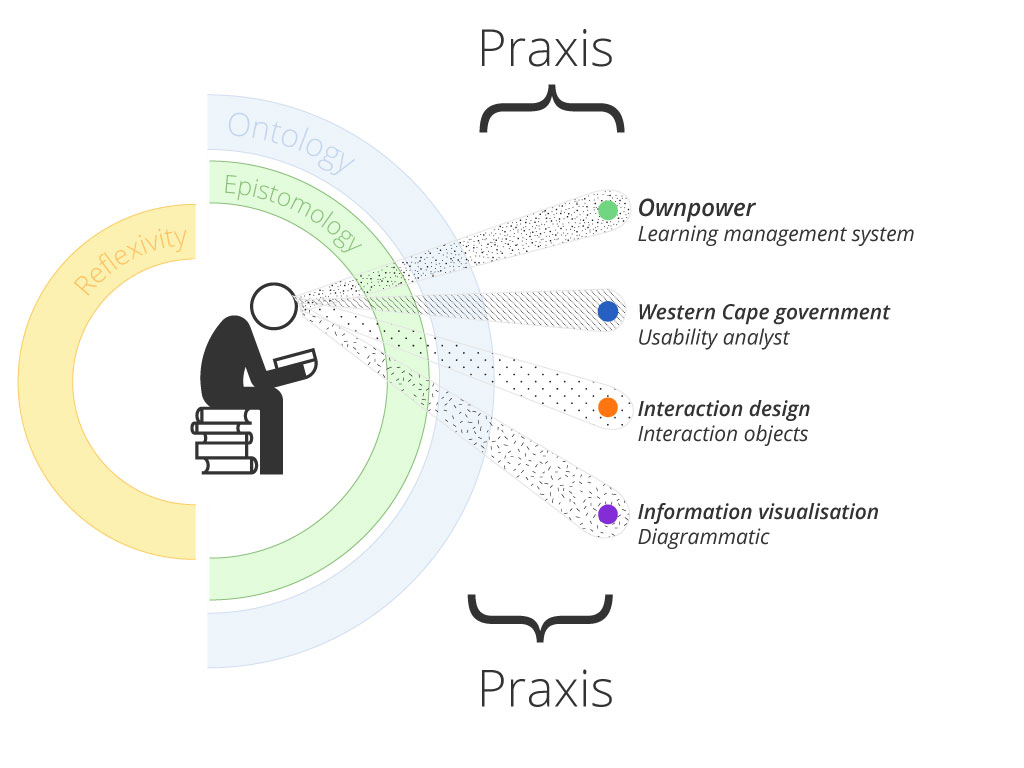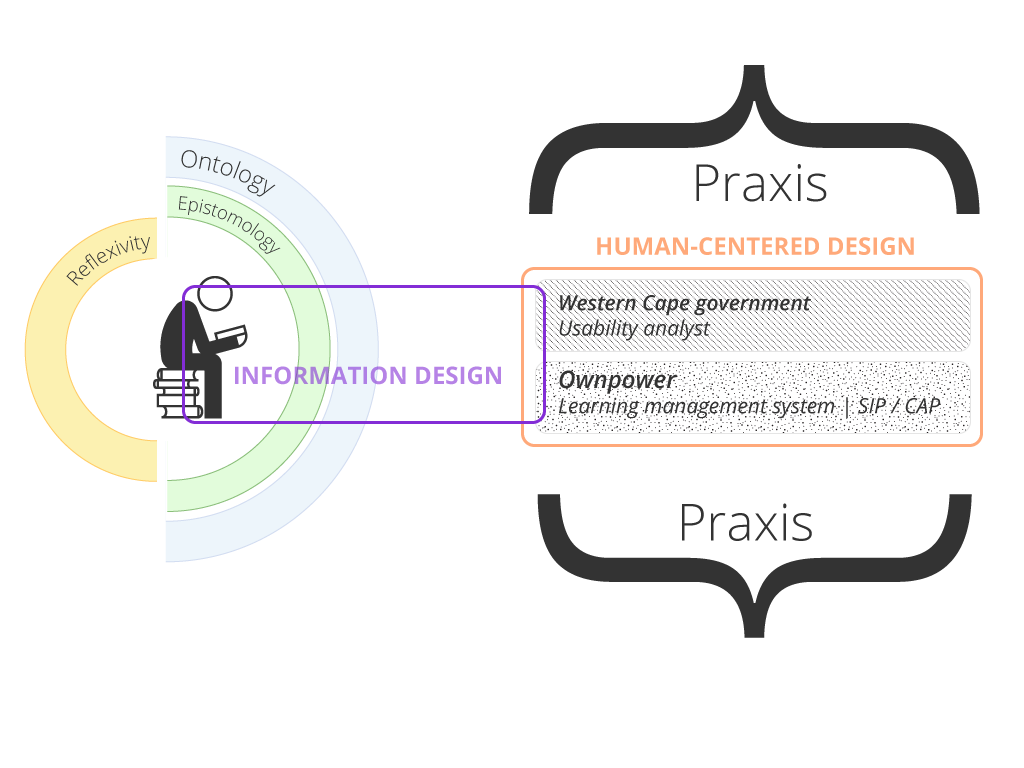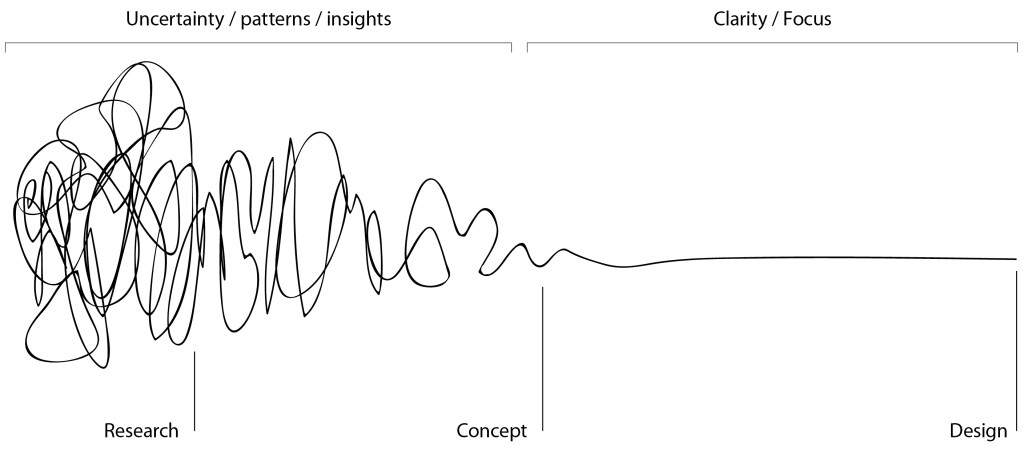Finding your problem in the mess.
I had a meeting with Sarah-Anne this afternoon. We had met because we both felt that concepts were kind of hanging around my head and there were no real lines drawing any conclusions or rather no defined problem statements as she said. It was really helpful zooming out of my head for a bit so I could look at what was hanging around my head. I had been battling with clarifying my topic, and as I stated in a previous post, I had been striving for perfection which was also having an affect on my topic. I had a problem aligning my day job with research and I felt like I was just going around in repetitive mental loops. So, Sarah-Anne and I met in an attempt to narrow down my options so that I could find the right subject matter to articulate. I started off with drawing out my initial goal, which looks like this;  So, here’s where I started and… Here is the one I drew up earlier today;
So, here’s where I started and… Here is the one I drew up earlier today;  We have all the main topics which I will be diving into in the Mphil. period, so I thought it might be best for me to focus on all these tasks and observe the transformation within. I found out that this was too broad. This was like the universe of an idea, Human centered design was like the milky way and Sarah-Anne had informed me that I needed to refine my problem statement area to the size of my thumb. I wasn’t sure what level of micro-macro speech we were on, but it was fascinating. Before this moment, Kosheek had walked past and just happened to drop in the most ideal sentence for the times – ” Just, embrace the chaos.” Timing is everything apparently. At this moment, I had the design squiggle flash through my brain, followed by a calm, frantic smile.
We have all the main topics which I will be diving into in the Mphil. period, so I thought it might be best for me to focus on all these tasks and observe the transformation within. I found out that this was too broad. This was like the universe of an idea, Human centered design was like the milky way and Sarah-Anne had informed me that I needed to refine my problem statement area to the size of my thumb. I wasn’t sure what level of micro-macro speech we were on, but it was fascinating. Before this moment, Kosheek had walked past and just happened to drop in the most ideal sentence for the times – ” Just, embrace the chaos.” Timing is everything apparently. At this moment, I had the design squiggle flash through my brain, followed by a calm, frantic smile. 
If I was experiencing uncertainty and chaos, I was doing it right! Joy! As I said in the perfection post, I was so busy trying to get out of the madness again, trying to come up with the ultimate outcome doesn’t solve any real issues. Fearing the messy unknown just makes the situation more messy. So, Sarah-Anne had added some grounding to my chaos by continually reminding me of narrowing down my area so I could define a problem statement. I started talking about, experince design and within that; Human- centered design, and that the problem I had with traditional experience design was that there was a lot of claim that projects were being run on a human-centered design based approach, but I had not seen this. I noticed that the problem was that systems were being built from a technical-centered approach first and finding the necessary users, to be used in the process, once they had been assumed. In other words, I had noticed that most design was taking place from a technical or business point of view and community was structured or told to fit into that system. I feel that we need to swap these around, so that digital ecosystems are built from real human needs.
Human interaction of people (inside and outside your company) is probably the one complex resource that needs to be understood and carefully monitored. Human interaction needs to be understood as the potentiality of the interaction of people (agents) producing either individuals who co-create out of emergence (on the one extreme) or agents who cause a disastrous conflict (on the other extreme). The situation obtained is not what is important, but rather the process of potentiality and its evolution. Human interaction, just like management learning, might need some supporting techniques that are, however, never of a nature to replace the necessity to understand the interaction itself. Up until now there have been few publications about the process of business economics as a learning and emergent concept. Likewise, there have not been many publications about emergent behavior and the methods of studying it either. – Value Based leadership in Business Innovation (Walter Baets ; Erna Oldenboom, 2013, p.127)
I happened to browse through Value Based leadership in Business and this paragraph was screaming at me to be added into this post. At the moment, the Western cape government (WCG) are trying to move along a human-centered approach, they are figuring out that they need to understand citizen behaviour and where they fit in.
This is the area I would like to turn into the size of my thumb; Ultimately, human behaviour is core to understanding real business needs, how are we going to facilitate social needs using technology? That’s a bit too broad. How do we find ways to include users at every step of the design process? Users need incentives for every interaction that takes place. Are we finding the right users to test our digital products, or are we ignoring our larger user base ?
Leave a Reply